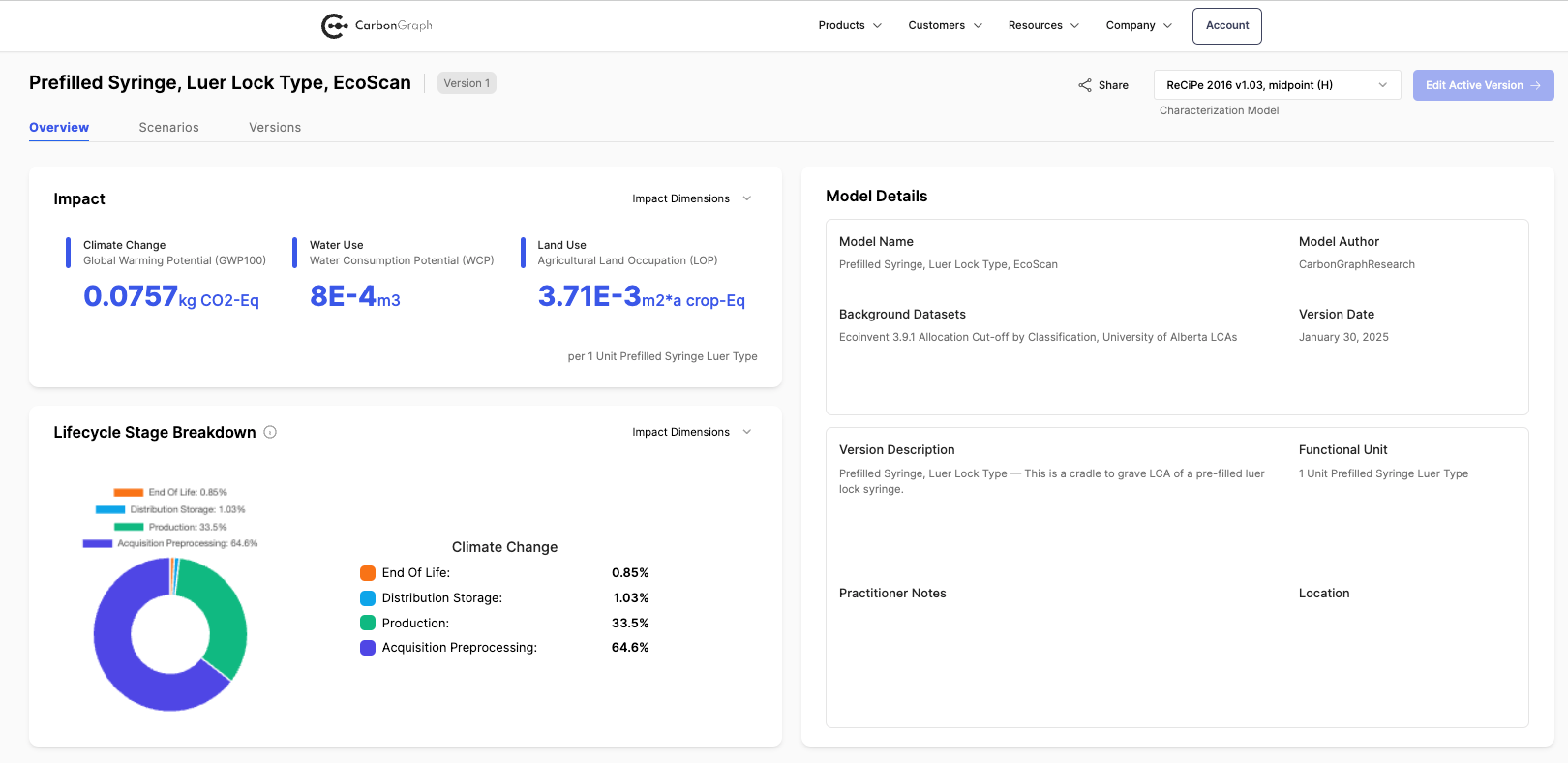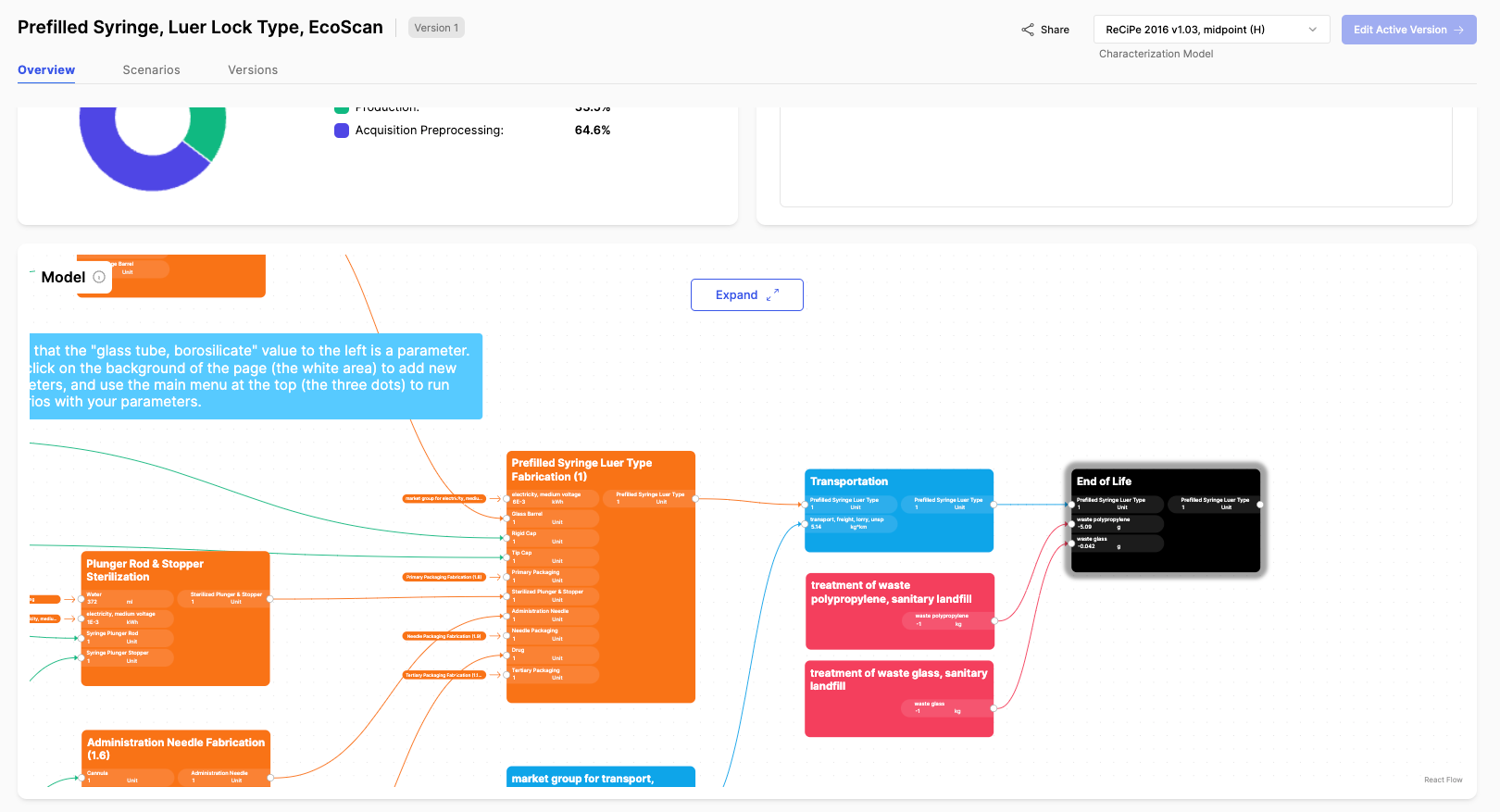Community Models: Good Medicine in LCA
Recently I was working on an LCA for a luer lock syringe. I was making progress, but I knew there were other LCAs that had been done for similar products and I wondered if another modeller in my shoes would be making similar decisions.
I had read through a publicly available LCA recently (one by Matthew Eckelman and Robert Litan), reviewed their inventory and results, but it hadn't really occurred to me to recreate a model until I was in the midst of creating my own. And it seems to me, if an experts' model were available for others to customize (for very similar production processes), it might save a lot of time and effort while increasing the volume of high quality studies the LCA community could create. So I decided I'd give it a shot with EcoScan.
I simply copied and pasted their inventory data into the tool, and had a pretty interesting result. The model itself came out a bit chaotic (EcoScan’s fault, nothing to do with the original authors), but I was able to tidy up the model in a few minutes and start exploring the results.
Recreating LCA studies has traditionally been a bit of a slog. It can take up valuable time, require special software licenses, and a lot of patience. This new approach speeds things up, making it easier to take a complex inventory and turn it into something useful.
One of the best parts? Anytime I do this in the future, it means I can share these models, work together with others, and make changes on the fly. LCA is often seen as having a bit of a black box problem. There are hyper-detailed tools that show all sorts of decisions and assumptions, but often we only see results. If we could create a way to share these models, we'd have a more open and collaborative community – and that seems like something that HAS to be better for the growing world of LCA.
Beyond just recreating studies, this approach opens the door to all kinds of scenario testing. You can tweak a model to see how design choices or materials impact the environment without starting from scratch each time. You can share a model and ask for community input - like, what obvious opportunities am I missing here to help build a better product? It’s a more flexible way to work, that can crowdsource great feedback and ideas, and it saves a lot of headaches.
The study we recreated focused on the healthcare sector, where environmental impact is a big deal. Decisions about product design and manufacturing have far-reaching consequences, so having solid, reliable data is critical. Tools like EcoScan help make finding and using that data a much smoother process. Though it’s far from perfect (check out the time I spent deleting miscellaneous transport assumptions), it’s getting better thanks to the feedback coming from the community.
If you’re into LCAs, you’ve probably noticed the push for tools that are faster, easier to use, and better at adapting to the growing complexity of supply chains. EcoScan is starting to fit into that shift, giving more people a way to work smarter with their data, without turning into a dreaded black box. The model is the model, and if you want to share it for others to recreate your work you can. In fact, you can go and check out this exact model yourself and let us know what you think.
If this sounds like your thing, check it out:
- Link to the Community Model in CarbonGraph (sign up for a free account and check out "Community Models" in the top nav).
- The original LCA study (publicly available, but in no way affiliated with CarbonGraph or EcoScan).
- Link to the video.
Lastly, check out the dashboards that are now accessible in CarbonGraph.


Share
Got a Product in Mind? Let's Model It Together.
Tell us what you're working on, and we'll show you how CarbonGraph can bring it to life with environmental insights.